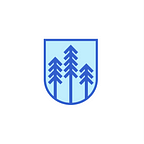AI2’s Wildlands Team Collaborates With FireWatch to Increase Community Fire Resilience
Residents in communities surrounded by nature enjoy peace and quiet away from the bustle of noisy, crowded cities. Unfortunately, such communities must live with an elevated risk of wildfires.
The area where homes and businesses transition to wilderness is known as the wildland urban interface (WUI). The WUI is the zone where developed areas transition to wilderness, where houses and nature intermingle. The WUI has experienced rapid growth over the past 30 years and continues to expand. Between 1990 and 2020, approximately 14 million homes were added to the WUI in the conterminous United States, making it the fastest growing land use type throughout the 48 contiguous states.
Because of their proximity to wildland vegetation, homes and businesses in the WUI are at the greatest risk for wildfire. The WUI is an area where wildfires can rapidly consume entire communities and where wildfires are notoriously difficult for firefighters to battle. In 2018, the Camp Fire destroyed over 18,000 structures within a few hours, nearly destroying the towns of Paradise and Concow in northern California. Most of these communities were in the WUI.
2023 has been a significant year for wildland fire. In June, fires in Canada sent record-breaking smoke into the United States and have continued to burn through the summer. In August, wildfire rapidly consumed the town of Lahaina, Hawaii, destroying over 2,000 buildings and causing at least 115 deaths. As of September, over 40,000 fires have burned more than 2 million acres in the United States.
As the Earth’s climate continues to change, local government agencies and individual communities must work together to increase their resilience in the face of increasing wildfire.
What Can Homeowners Do to Prepare?
One important action a homeowner can take is to maintain the area directly surrounding their home by clearing it of vegetation and other combustible material. Doing so creates a defensible space, providing a break that can slow or halt a fire that threatens the property. This defensible space may also provide a safe location for firefighters to defend a home.
Studies have shown that clearing vegetation within 100 feet of a home significantly improves the likelihood it will survive a wildfire. This 100-foot buffer can be further subdivided into zones, with the first 5 feet from the home considered an ember-resistant zone that should be fully cleared of all combustible materials.
In California, defensible space is now required by law in areas that are at high risk for wildfire. Assembly Bill 38 requires documentation of a compliant Defensible Space Inspection for properties in “high” or “very high” fire hazard severity zones.
Additionally, different vegetation types present different levels of fire risk. By planting appropriate plants, removing dead debris, and reducing ladder fuel, individuals can protect their homes and reduce the risk to their communities.
How Technology Can Help
To assist these efforts, AI2’s Wildlands team is collaborating with FireWatch, a company that uses aerial imaging to identify, monitor, and communicate wildfire hazards in communities. The aerial imagery is high-resolution, which allows it to be used to produce fine-grained analysis of an entire community. It is also multispectral, encompassing both visible colors and near-infrared light bands. This enables remote sensing evaluations such as Normalized Difference Vegetation Index (NDVI), which uses a combination of red light and near infrared to assess vegetation quantity and stress.
The data provided by FireWatch gives communities a more accurate understanding of their wildfire risk and concerns. This gives residents an opportunity to proactively take action and prepare ahead of a wildfire. By engaging homeowners, these residents can get the data they need to achieve compliance with defensible space requirements in their area. At a higher level, communities can integrate the information into their own community wildfire protection plans. These plans, along with vegetative fuel hazard maps, can aid in grant funding applications to support improving community resilience. Fire departments can also do pre-attack planning and create common operating pictures of hazardous fuels for first responders.
“Each year, FireWatch develops customized vegetative fuel maps for community leaders and homeowners which identify areas of high fire risk throughout the community of Rancho Santa Fe, California. Fuel reduction efforts are measured and monitored over time to improve wildfire risk management. The FireWatch data is shared with local fire authorities which strengthens communication with homeowners about defensible space compliance.” — Caitlin Kreutz, Rancho Santa Fe Association of San Diego County
The Wildlands team is working closely with FireWatch to use artificial intelligence and geospatial analysis to assist with understanding and quantifying wildfire risk in communities. Applying these techniques to the problem of assessing defensible spaces allows the risk quantification effort to be scaled up beyond its current limits.
Machine learning can also be utilized to identify risks that are currently difficult to quantify with other techniques. These include detection of certain plant communities such as chaparral, which can be challenging to classify by more traditional remote sensing techniques. It can also be used to detect year-over-year changes, giving communities and homeowners a picture of how their wildfire risk is developing over time. Further, machine learning can be applied to solving the problem of generating building footprints that align with the aerial images. Having accurate building outlines is a critical component for the evaluation of defensible space around a home.
Establishing defensible space is one of the most important steps that any homeowner can take to prepare their property for a wildfire. By analyzing communities using aerial imagery, we can help homeowners, communities, and first responders mitigate the risks of wildfires.
The Wildlands team’s work with FireWatch helps further our research into applying AI to support wildland fire resilience.
Follow @allen_ai on Twitter/X, and subscribe to the AI2 Newsletter to stay current on news and research coming out of AI2.
